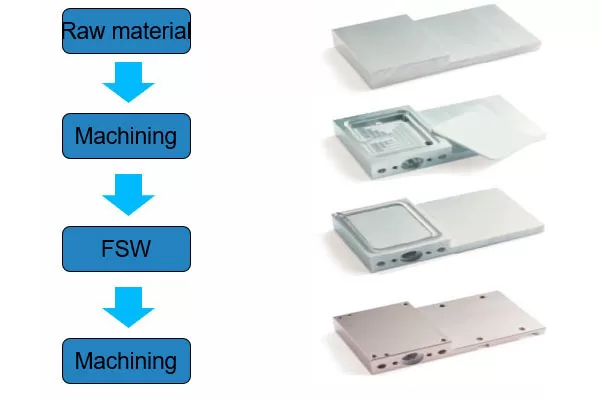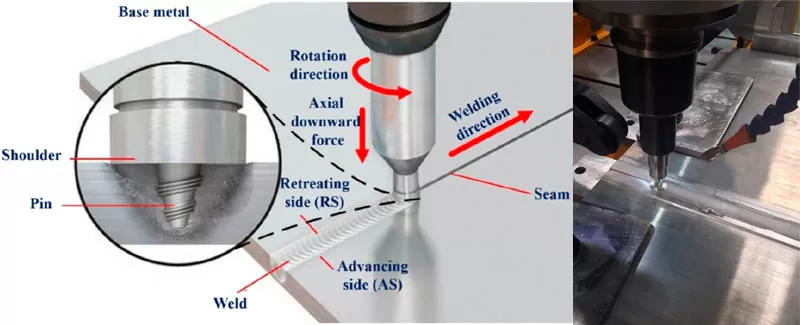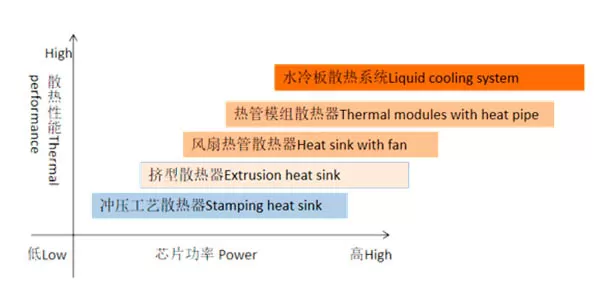
Friction stir welding (FSW) plays a vital role in the production of heat sinks, offering numerous benefits and advantages for the thermal industry. In friction stir welding, the multiple components of the heat sink are rubbed against each other by means of a wear-resistant rotating tool under high pressure. The heat generated in this way softens the metal at the contact surface and the two pieces of metal are intermixed by the mechanical pressure of the tool.

Friction stir welding (FSW) is a solid-state joining process that requires no melting of the materials during the process. As shown in Figure, a non-consumable rotating tool with a specially designed pin and shoulder is inserted into the abutting edges of plates to be joined and traversed along the joint line. The heat generated by the rotational and transverse movements of the tool softens the materials and stirs it due to the friction and the plastic deformation. From the operational viewpoint, a FSW run contains four phases including plunging, dwelling, welding and retracting stages.

Pioneer Thermal can provide the heat sink solution for customers according to customer's application and the power electronice . Generally low power of the heat sink, it can be used the stamping process or extrusion process. But copper and aluminium heat pipe thermal modules with soldering fins can solve the high power electronics and a hige thermal performance. When high precision electronics components for the temperature requirements more stringent,liquid cooling system has become the choice of designers striving to manage the rising heat loads of high power electronices.


 +86-18902844286
+86-18902844286
 E-mail
E-mail
